What Are Backlinks in SEO? Simple Guide to 10x Your Traffic

You know, when I first started diving into the world of SEO, backlinks were this mysterious thing that everyone kept talking about, but no one really explained in plain English. It felt like some secret handshake that I just wasn’t getting.
I remember thinking, “Okay, so backlinks are important, but… what even are they? And why does everyone act like they’re made of gold?” Well, it turns out they kind of are.
Backlinks are like votes of trust for your website. They serve as a means for other websites to acknowledge your expertise. The best part is that Google pays close attention to these votes.
The more solid, high-quality backlinks you have, the better your chances of ranking higher and driving crazy traffic to your site.
What Are Backlinks?
Backlinks are links on other websites that point to your website. They’re like online recommendations when a website links to your content: it’s saying, “Hey, this is worth checking out!”
Search engines use backlinks to measure how trustworthy and valuable your website is, which can help improve your rankings in search results.
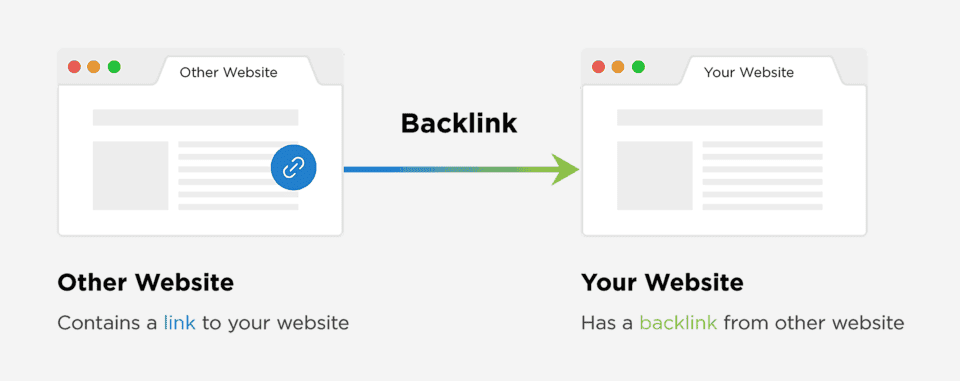
Backlinks alone are responsible for eight of the 20 most critical factors that define your search engine ranking since they play an important role in how your website performs in search results.
Is it Possible For a Page to Rank Without Backlinks?
Yes, it’s possible for a page to rank without backlinks, but as Google’s John Mueller often emphasizes, quality over quantity is key. One high-quality backlink can be far more valuable than countless low-quality ones. In other words, it’s not about how many backlinks you have, it’s about how credible and relevant they are.
Backlinks are the bridges that connect your content to the world, guiding search engines and users to discover your value.
Understanding Backlinks in SEO
Backlinks, in the simplest terms, are like digital shoutouts. It’s when one website links to another using a hyperlink. Think of it as one site saying, “Hey, this content is worth checking out!” to search engines.
These links act as trust signals, telling search engines that your content has value and deserves attention. It’s kind of like getting a thumbs-up from a credible source in your field.
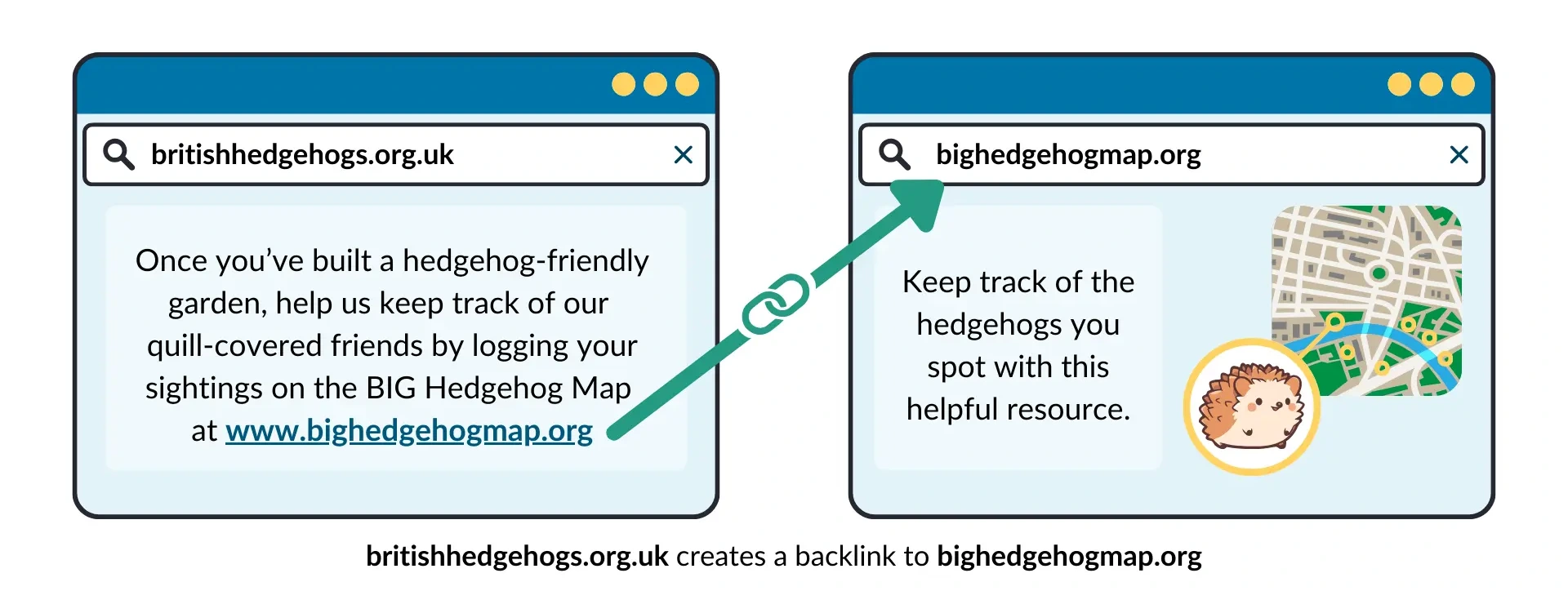
Backlinks play a crucial role in boosting your website’s search engine rankings because they serve as votes of confidence for your site’s authority. Research shows that the top-ranking page on Google typically has 3.8 times more backlinks than the pages ranked second to tenth.
Surprisingly, 95% of all web pages have no backlinks at all, which presents a massive opportunity. By building high-quality backlinks, your website has a much better chance of ranking higher and standing out in search results.
Let’s take a closer look at the quality indicators that matter for your site:
- Domain authority and trustworthiness
- Relevance to your content and industry
- Placement within main content rather than footers or sidebars
- Natural growth pattern over time
The March 2024 update significantly impacted how search engines evaluate backlinks. The latest algorithm places greater emphasis on the topical relevance of websites linking to each other.
Additionally, Google reported a 40% decrease in the visibility of spammy and low-quality pages, which is a step toward improving content quality across the web.
It’s crucial for websites linking to yours to demonstrate genuine expertise in your field. Recent data highlights that a few high-quality, contextually relevant links from reputable sites within your industry can outweigh thousands of unrelated backlinks in value.
Despite these changes, backlinks remain one of Google’s top-ranking factors, holding the third position. Building natural, editorial links is essential for improving your website’s visibility in search results.
Measuring Backlink Quality
When you are evaluating your backlink quality, you have to know the leading metrics that the search engines employ in deciding link value. Generally, overall site authority and ranking significantly depend on your backlink profile.
Key Metrics for Evaluating Backlinks
These metrics are the foundations of a good backlink review:
- Domain Rating (DR): Quantifies the website’s authority on a range of 0-100
- Authority Score (AS): Signals area quality and SEO efficiency on a scale of 0 up to 100
- Toxicity Score: Assesses potential threats, and risks with values over 60 flagged as toxic.
- Trust Flow: Determines link trustworthiness based on referring domain quality.
Tools for Backlink Analysis
If you want to stay on top of your backlink game, you’ll need some handy tools to monitor and analyze your profile. These tools act as your personal SEO detectives. They help you figure out which links are working for you, which ones aren’t, and where you might need to step up your strategy.
1. Semrush
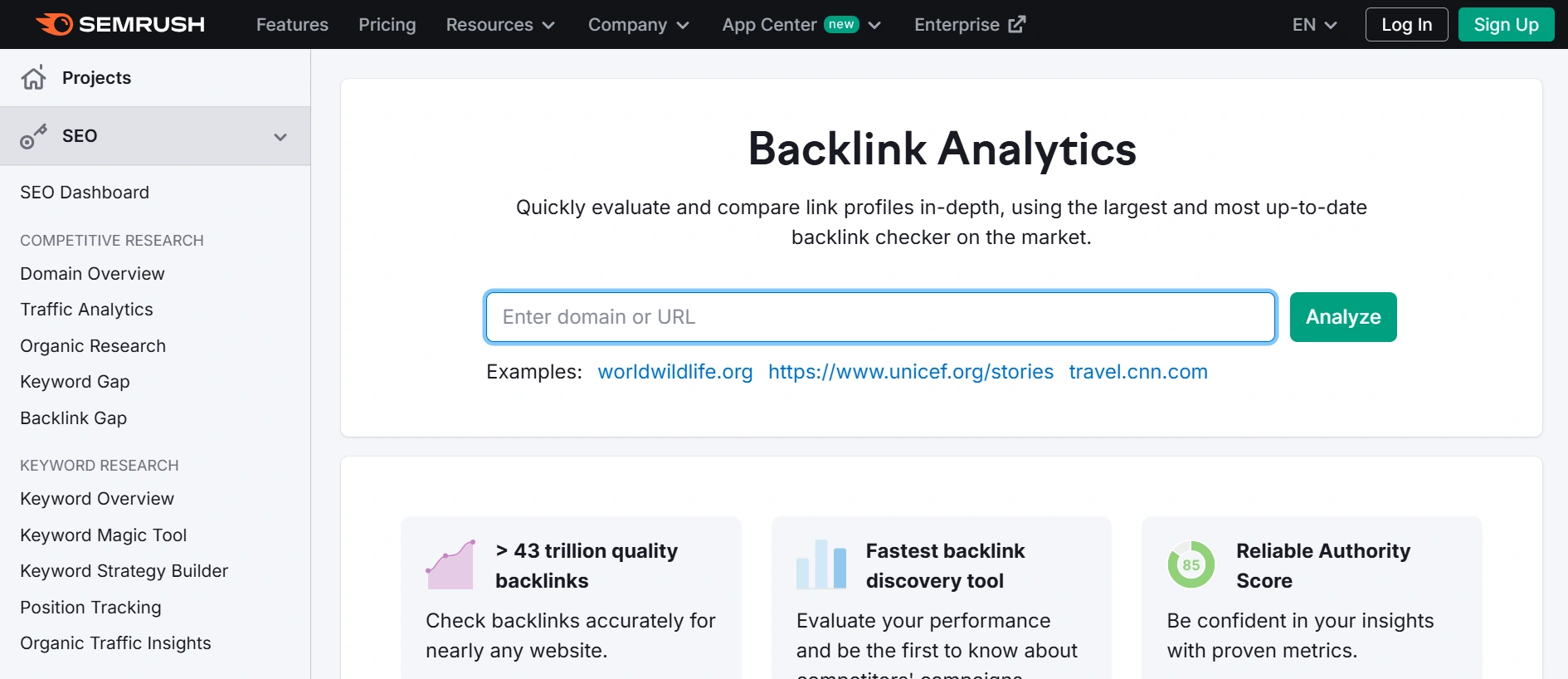
Semrush is a fan favorite and for a good reason. It dives deep into your backlink data and shows you exactly what’s helping (or hurting) your site. It’s like having a magnifying glass for your link-building efforts.
2. Ahrefs
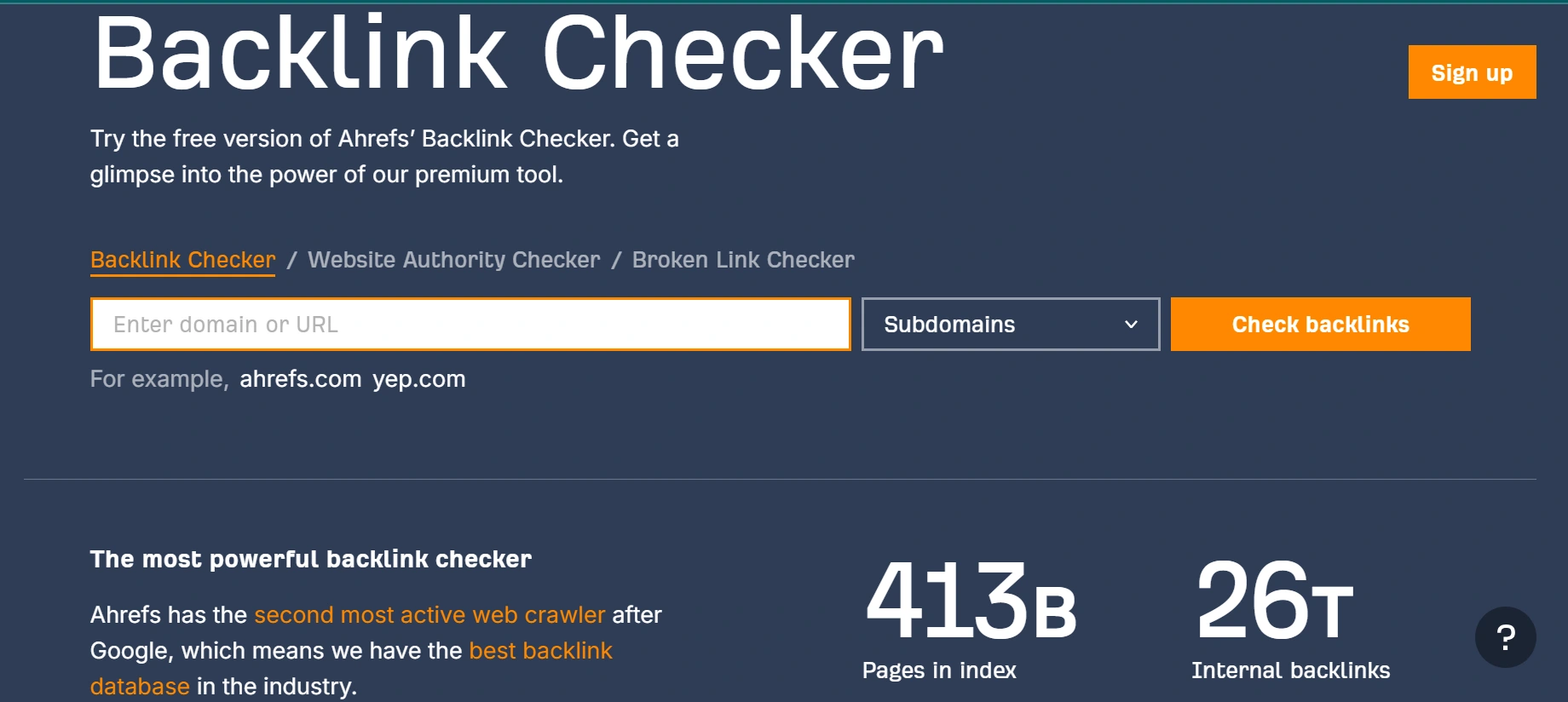
Ahrefs is another powerhouse tool, often praised for its lightning-fast updates. In fact, its database refreshes every 15 minutes! That means you’re always working with the freshest data, making it easier to spot new backlinks or keep tabs on your existing ones.
3. Majestic
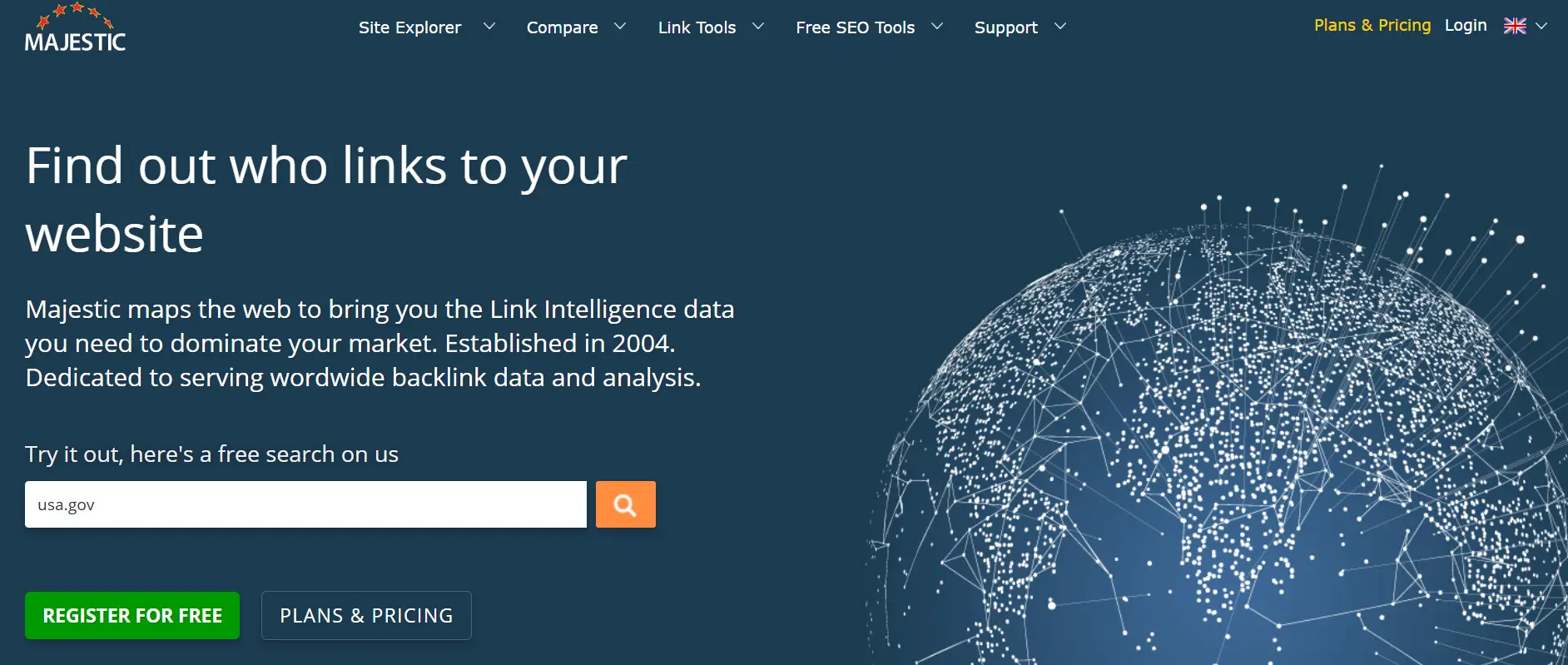
Then there’s Majestic, which brings something unique to the table. Its Link Context feature is a game-changer; it tells you where your backlinks are located on a page and what’s around them. Are they tucked away in the footer or front and center in the main content? Knowing this can make a big difference because search engines care about context.
What’s cool is that Majestic doesn’t just stop there. You can use it to audit your links, checking how well they match the content and how they’re positioned on the page. It’s like giving your backlink strategy a full check-up.
These tools don’t just make backlink analysis easier, they make it smarter. By using them, you’re not just guessing what works. You’re making informed decisions that can boost your site’s authority and search rankings. Think of them as your secret weapon for building a winning backlink strategy.
Red Flags in Backlink Profiles
Not all backlinks are good news for your website. Some can actually do more harm than good. So, as you’re analyzing your backlink profile, keep an eye out for these red flags:
- Links from Websites with Low Traffic or Authority
If a site barely has any organic traffic or authority, its link probably isn’t doing you much good. Backlink is like a recommendation, would you trust advice from someone who has no credibility? The same logic applies here. - Overuse of “Money Keywords” in Anchor Text
Money keywords are the ones you’re trying to rank for, like “best shoes for running” or “cheap laptops.” While it’s fine to have these occasionally, overdoing it makes it look like you’re trying to game the system. Search engines don’t like that and might penalize you for it. - Sudden Spikes in Backlink Growth
Did you suddenly get 500 new backlinks overnight? That’s not normal and can look suspicious to search engines. They might think you’re using shady tactics, like buying links or joining link schemes, which can lead to penalties. - Links from Unrelated or Irrelevant Websites
Imagine running a travel blog, and you’re getting backlinks from a website about car repairs. That doesn’t make much sense, does it? Irrelevant links don’t just confuse search engines, the can also make your backlink profile look unnatural.
Bottom Line
When it comes to backlinks, quality beats quantity every time. Regularly check your profile, clean up the bad stuff, and focus on building meaningful connections with reputable, relevant sites. It’s better to have a few solid backlinks than a pile of sketchy ones dragging your site down.
How to Gain High-Quality Backlinks: Effective Methods
Building quality backlinks isn’t some mystical art. It’s a skill, and you can get good at it with the right approach. Let’s look into some straightforward, proven methods that’ll help you earn links that boost your site’s authority.
1. Content That Naturally Earns Links
Here’s the deal: people link to content that’s genuinely useful, unique, or interesting. If your content doesn’t check at least one of those boxes, it’s going to be tough to get quality backlinks. Some things that tend to grab attention (and links) include:
- Stats and Data: Do some industry-specific numbers or trends? People love citing reliable sources.
- Step-by-Step Guides: Think of those “how-to” articles you’ve Googled a hundred times. They’re gold because they solve problems.
- Infographics: A well-designed visual can pack a punch and make complex ideas super easy to understand.
- Interactive Tools: Stuff like calculators or quizzes can be a magnet for backlinks, people just love sharing them.
- Expert Interviews: Bring in voices from the top players in your field. That can open doors for backlinks from their audiences.
2. Building Relationships That Lead to Links
Here’s another secret: The best backlinks often come from who you know, not just what you publish. Relationships matter, and genuine ones are worth way more than a bunch of cold emails. Here’s how to make it work:
- Start on Social Media: Follow, comment, share, and get on their radar in a way that feels authentic, not spammy.
- Be Helpful First: Maybe you recommend their work or share a resource they’d find useful. Building goodwill goes a long way.
- Think Long-Term: Don’t treat people like a one-time transaction. Real connections take time, but they’re worth it.
- Find the Right People: Aim for those who can make decisions: content creators, editors, or SEO managers.
3. Using Digital PR to Your Advantage
Digital PR is like giving traditional PR a modern twist. You’re basically creating buzzworthy content that naturally attracts links. Here’s how to make that happen:
- Newsworthy Content Wins: If it’s fresh, relevant, or surprising, journalists and bloggers will be all over it.
- Ride the Trends: Pay attention to what people are talking about and join the conversation with your own spin.
- Original Research is Gold: Surveys, reports, or case studies can position you as an expert and earn trust.
- Visuals Help: Think of charts, graphs, or snazzy infographics that make your content stand out.
- Make It Easy to Share: Highlight the key takeaways upfront, so people don’t have to dig for the good stuff.
A Final Word: Don’t Rush It
Look, building backlinks isn’t something you can rush. It’s a process, and it takes patience. Focus on creating content that’s worth linking to, and then promote it in ways that feel authentic. Over time, you’ll build a backlink profile that not only looks good but also helps you rank where it counts
Tracking Backlink Performance
If you’re serious about your link-building efforts, you’ve got to know what’s working and what’s just wasting time. Tracking backlink performance isn’t just about numbers; it’s about figuring out how those links impact your traffic and conversions, both now and in the long run.
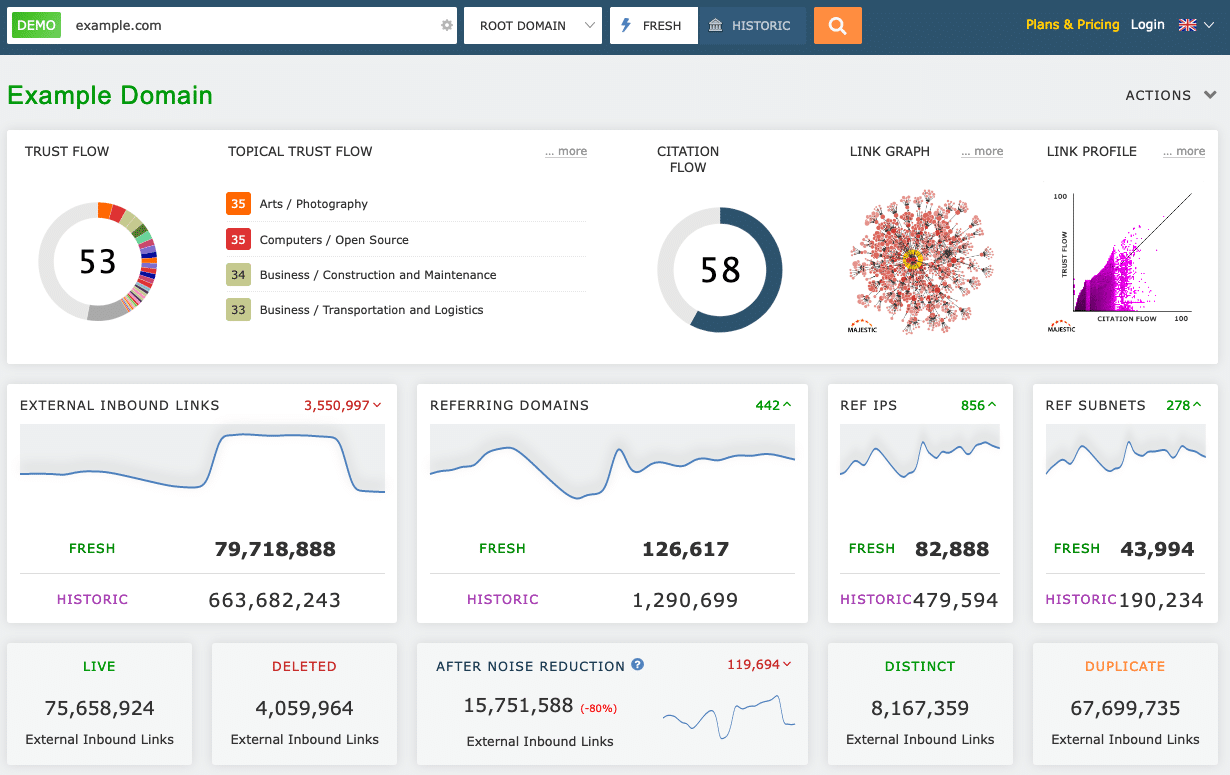
How to Set Up Backlink Monitoring
First things first, you need good tools to keep tabs on your backlinks. Without them, you’re pretty much flying blind. Thankfully, there are plenty of reliable options out there:
- Monitor Backlinks: This one syncs up with Google Analytics and even sends you alerts when you gain or lose backlinks.
- SEO PowerSuite: It gives you detailed reports and analyzes the quality of your backlinks, so you know which ones are worth it.
- Moz Link Explorer: Great for checking anchor text and spotting spammy links.
- BuzzStream: Automatically verifies your backlinks and helps you find new link-building opportunities.
Measuring Traffic from Backlinks
Alright, so you’ve got the links. Now what? You need to see if they’re driving traffic to your site. Google Analytics is your go-to tool for this. Keep a close eye on your referral traffic to figure out which backlinks are pulling their weight.
Here’s what you want to track:
- Traffic Per Link: Which backlinks are sending people your way?
- User Engagement: Are visitors sticking around, or are they bouncing?
- Conversions: Are these visitors signing up, buying, or doing what you want them to do?
- Link Placement: Links buried in the footer won’t perform as well as those smack in the middle of a blog post.
Figuring Out ROI (Return on Investment)
Calculating the ROI of your link-building efforts can get tricky, but it’s worth it. You’re investing time and resources, so you need to know if it’s paying off.
Here’s how to do it:
- Value Per Session: Divide your total organic revenue by the number of organic sessions. This tells you how much each visitor is worth.
- Before vs. After: Compare your rankings and traffic before and after you publish new content (give it at least 90 days for a proper evaluation).
- Clickthrough Rates (CTR): Moving up in search rankings makes a huge difference. For instance, climbing from the third to the first spot can boost your CTR by 10-30%.
The Long Game: Long-Term ROI
When it comes to long-term results, things get a little more complex, but the payoff is bigger. Metrics like Domain Authority (DA) come into play here. Just remember, moving your DA from 10 to 20 is way easier than jumping from 80 to 90, thanks to its logarithmic scale.
Another underused but super insightful tool is Google Search Console. While many marketers only focus on clicks, impressions can give you a better idea of how visible your site is in search results. It’s not just about who’s clicking, it’s about who’s seeing you in the first place.
Tracking your backlinks might not sound glamorous, but it’s the backbone of a solid SEO strategy. Stick with it, and you’ll start seeing which efforts are paying off and which ones need a little tweaking.
Common Backlink Mistakes to Avoid
When it comes to link-building, knowing what not to do is just as important as mastering the right strategies. One misstep, even if unintentional, could land your website in hot water with search engines. And trust me, you don’t want to deal with penalties since they’re a headache and a half to recover from.
Steer Clear of These Black Hat Techniques
Not all backlinks are created equal. Some can do more harm than good, especially if they come from shady or low-quality sources. Here are some practices you should avoid like the plague:
- Private Blog Networks (PBNs): These are networks of websites built purely to manipulate rankings. Google’s got a sharp eye for these.
- Link Farms: These sites exist solely to distribute backlinks, but they’re a red flag for search engines.
- Automated Link Building: Bots spamming forums and comment sections for links? That’s a hard no.
- Paid Links: If you’re paying for links without proper disclosure, you’re walking on thin ice.
- Link Exchanges: Excessive “I’ll link to you if you link to me” arrangements can look unnatural and raise suspicion.
Link-Building Myths You Need to Forget
Let’s bust a few common myths while we’re here:
- “More links are always better.”
Nope. If search engines see a sudden, unnatural spike in backlinks, it could set off alarm bells. Quality always trumps quantity. - “Only high Domain Authority (DA) links matter.”
Not true. Even links from smaller, relevant sites like a local library can pack a punch. It’s all about relevance and authenticity. - “Exact-match anchor text is key.”
This used to be true, but not anymore. Overdoing it can hurt you. Aim for a mix of natural, diverse anchor text instead.
How to Recover from Bad Backlink Practices
If you’ve already stumbled into toxic backlink territory, don’t panic. There’s a way out but it takes work.
- Spot the Problem Links
Use backlink analysis tools to identify the culprits. Look for:- Links from irrelevant or low-quality websites.
- Unnatural anchor text patterns that don’t make sense.
- Take Action
- Reach out to the site owners and politely request the removal of bad links. (Be prepared for a low success rate,10-20% is typical.)
- Keep a record of your removal attempts for transparency.
- Use Google’s Disavow Tool
- Compile a list of the toxic links you couldn’t get rid of manually.
- Submit the list via Google Search Console, making it clear that these links shouldn’t count against your site.
- Only disavow links you’re sure are harmful.
Proactive Monitoring to Stay Safe
If competitors try to sabotage your site with spammy links (yep, that’s a thing: welcome to the world of negative SEO), regular backlink audits are your best defense. By keeping an eye on your backlink profile, you can catch and handle issues before they spiral out of control.
Building a healthy backlink profile isn’t just about getting it right, it’s also about avoiding pitfalls that could undo all your hard work. Stay sharp, stay ethical, and remember: that patience and consistency win the SEO game every time.
Conclusion
Backlinks are the backbone of any successful SEO strategy. They’re like trust signals from the internet, vouching for your site’s credibility and helping you climb those search rankings. When managed well, a strong backlink profile can bring in steady traffic and position your website as an authority in your niche.
Here’s a quick recap of what matters most in your backlink journey:
- Focus on Quality: Prioritize earning links from reputable, relevant websites over chasing sheer numbers.
- Leverage Proven Strategies: Use content-driven and relationship-building techniques to attract organic backlinks.
- Track and Optimize: Keep an eye on your backlink performance with reliable tools to see what’s working and what’s not.
- Avoid the Dark Side: Steer clear of black-hat tactics like PBNs, paid links, or spammy strategies that can land you in trouble.
Building a stellar backlink profile isn’t an overnight task: it takes time, patience, and a whole lot of consistency. The key is creating content so valuable and engaging that people want to link to it. Forget shortcuts; the long game is where the real wins are.
And remember, regular audits are your safety net. They’ll help you catch and clean up toxic links before they harm your rankings.
With this knowledge in your toolkit, you’re ready to craft a smarter, more sustainable SEO strategy. Build connections, share valuable insights, and watch your website grow into a trusted authority in your field. You’ve got this!
Frequently Aske Questions
How do backlinks impact SEO rankings?
Backlinks serve as trust signals to search engines, indicating that other sites find your content valuable. They significantly influence your website’s authority in search results, with the top-ranking pages typically having more quality backlinks than lower-ranked ones.
What makes a backlink high-quality?
High-quality backlinks come from authoritative and trustworthy domains, are relevant to your content and industry, appear within the main content rather than footers or sidebars, and show a natural growth pattern over time.
How can I build quality backlinks for my website?
You can build quality backlinks by creating linkable content such as original research and data-driven reports, developing relationships with industry peers, and implementing digital PR strategies. Focus on creating valuable content that others naturally want to reference
What tools can I use to analyze my backlink profile?
Several tools are available for backlink analysis, including Semrush, Ahrefs, and Majestic. These platforms offer comprehensive insights into your backlink profile, helping you evaluate link quality, monitor new and lost links, and identify potential issues.
What are some common backlink mistakes to avoid?
Common backlink mistakes include using private blog networks (PBNs), participating in link farms, employing automated link building, purchasing links without proper disclosure, and engaging in excessive reciprocal linking. These practices can lead to penalties from search engines and harm your website’s reputation.






